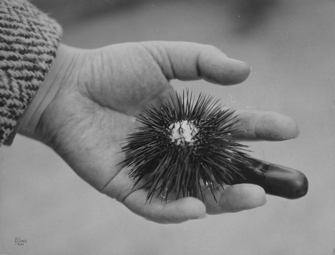
French photographer Eli Lotar (1905-69), the subject of one of the current exhibitions at the Jeu de Paume in Paris, seems to have been rather forgotten until now compared with such contemporaries as André Kertész, Henri Cartier-Bresson and Robert Doisneau, perhaps because his body of work does not communicate as strong a personal viewpoint as those pillars of 20th-century French photography. This retrospective, however, is well worth seeing for its many brilliant moments.
Lotar, the son of Romanian poet Tudor Arghezi and teacher Constanța Zissu, was born in Paris but grew up in Bucharest. As a young man, he returned to Paris, where he met photographer Germaine Krull and learned his craft from her, even using her camera at first.
His photos eventually appeared in a variety of revues, including Georges Bataille’s Documents, which published his “Abattoirs de la Villette” series. His image of rows of detached bovine forelegs leaning against a stone wall perfectly fits the description of his
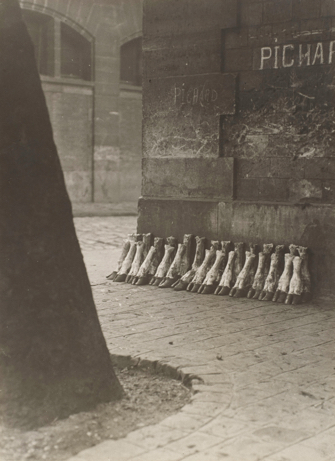
work by one of the curators, Damarice Amao, as “poetic, chilling naturalism.”
Lotar ran with the avant-garde crowd in his youth, working with Luis Buñuel on the documentary Terre sans Pain (1933), making appropriately absurdist collages to promote Antonin Artaud’s Théâtre Alfred Jarry, and, late in his life, hanging out with his friend Alberto Giacometti, whom he photographed in his studio and for whom he often served as a model.
In the early days, Lotar strove to find new angles for all his shots. Some of the standouts for me were the circus acts seen through their shadows rather than the subjects themselves, the bold graphics of an image of a locomotive,
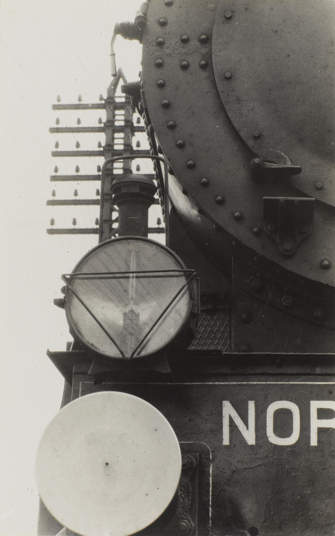
and a bird’s-eye view of an intersection in Paris with a few isolated individuals stranded on the empty expanse of a traffic island circled by cars.
It is fun to see how his original photos were adapted for publication in magazines, although we are not informed whether these decisions were made by Lotar himself or the publication’s editors. A wonderful image of a man in hat and overcoat taking a step as he crosses the street, his oversized, elongated shadow stretching into the foreground of the photo, was turned upside down and cropped for publication on the April 15, 1929, cover of Jazz, so that the distorted shadow becomes the main subject.
There are also some effective shots with a surrealistic touch, among them a pair of child’s legs from a broken mannequin standing alone
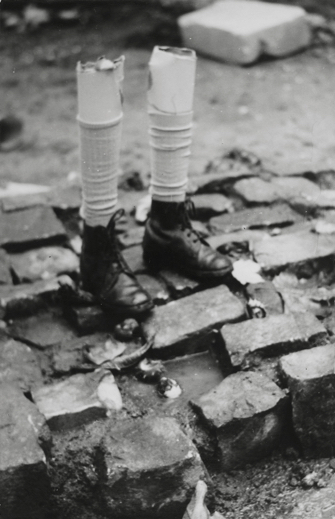
on loose cobblestones, collages that superimpose Paris monuments on street scenes or rooftops, and a hand holding a sea urchin.
Pictures from the photographer’s travels in Spain and Greece and his portraits of personalities of the time are also on show. The
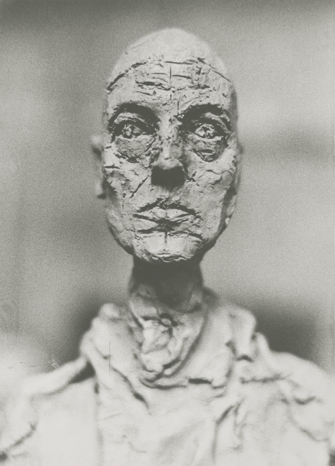
exhibition ends with his photos of Giacometti and a Giacometti bust of him.
In a completely different register, “Peter Campus: Video Ergo Sum,” a show in the Jeu de Paume’s upstairs galleries, features the work of the American photographer born in 1937 and still working today. Like Lotar, Campus had a Romanian father, but the resemblance seems to end there.
His early video installations from the 1970s are great fun for visitors to the show, who are themselves the subjects of the work, with their
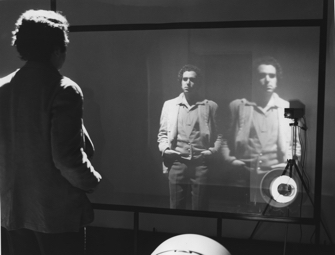
moving images split into multiples or transformed into ghostly figures. On the day I was there, a group of three women couldn’t stop dancing in front of one of them to see how their moves would be interpreted, while another woman managed to have one image of herself kiss another one on the lips.
After Campus stopped making these installations, he turned to dark photographic or video portraits of individuals, then to scenes from nature like the pixelated video of a breaking wave included in the exhibition. Today, he is focusing on real world scenes in
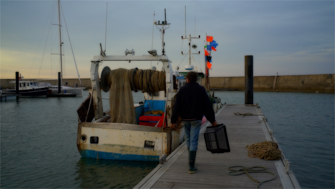
multiscreen video installations like the final work in the exhibition, “Convergence d’Images vers le Port,” created especially for this show.
Favorite